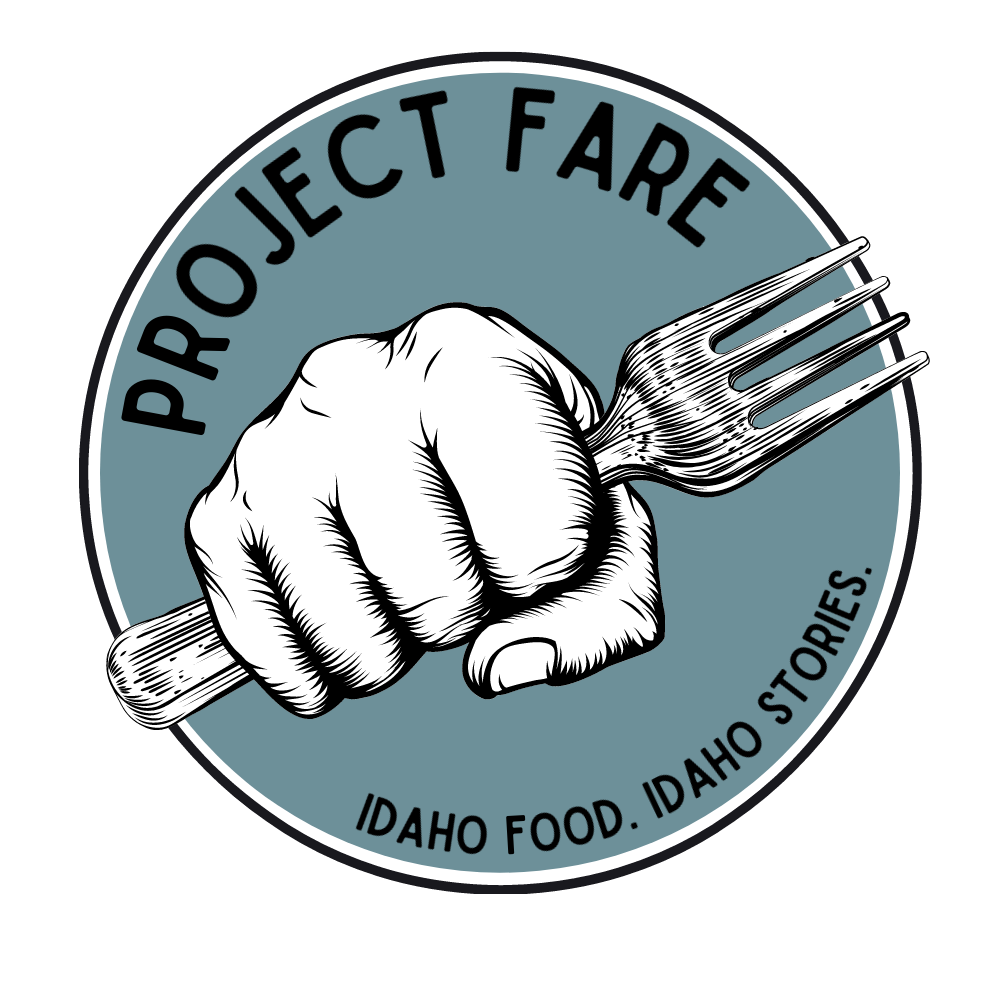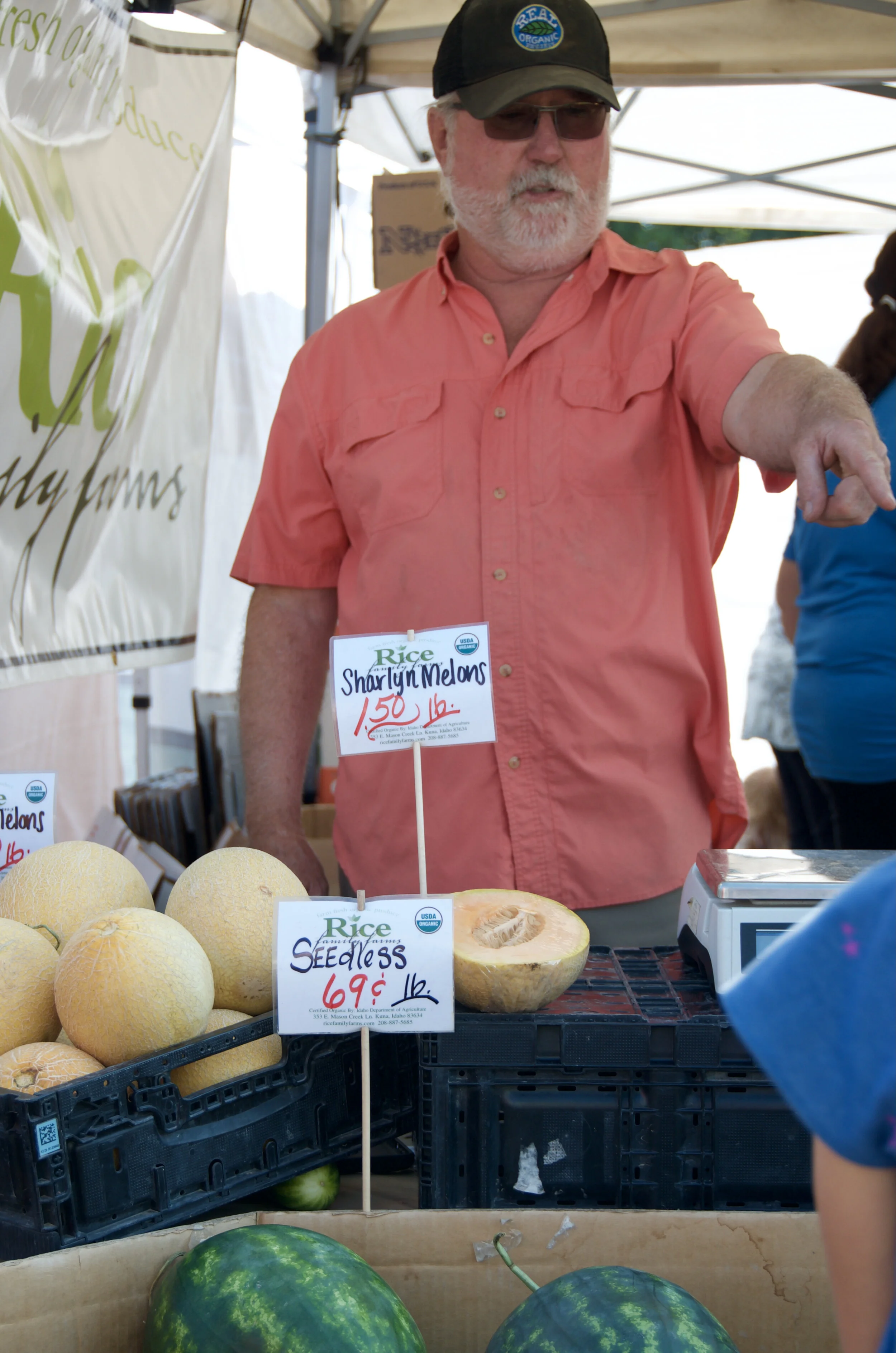The Story Behind the Price Tag: Are farmers markets really more expensive than grocery stores?
Written by Lex Nelson / Photos by Alyson Outen
Asked about his pricing strategy at the Boise Farmers Market, Steve Spiteri of Meridian’s Ohana No-Till Farm described a moment of standoff at the booth. It’s a familiar snapshot: The vendor stands on one side of the plastic table while the buyer stands on the other, bag of salad in hand.
“It’s a business, so naturally we’re trying to get the highest price we can and people buying the stuff would naturally like to get it for as low a price as they can get it,” he said. “It’s sort of just a very pure form of the market economy.”
That game plays out every day at farmers markets, co-ops, and grocery stores across the country. But for years, farmers markets have been dogged by the stereotype that they’re too expensive — specifically, that they’re more costly than grocery stores.
Let’s Run the Numbers
Digging into the data, it appears this both is and isn’t true. In 2011, the Northeast Organic Farming Association of Vermont (NOFA-VT) compared prices for 12 core food items at nine farmers’ markets, grocery stores, and co-ops across the state. It found that when controlling for conventional and organic produce, some items were pricier at the farmers market, while others cost more at the grocery store, and organic food was almost always more affordable at the farmers market.
Photos by Alyson Outen
Items like organic and conventional cantaloupe and lettuce, for example, were much cheaper at the farmers market, while conventional potatoes and tomatoes were cheaper at the grocery store. Ultimately the study found, “prices at farmers’ markets are in many cases competitive with prices at grocery stores.”
The Costs You Can’t See
There are many reasons why farmers market pricing can sometimes be out of reach. If the farmer uses organic farming techniques, they may have steep input costs for fertilizer, seeds, and certifications. If they run a no-till operation, they may have higher labor costs. They may also price higher to avoid undercutting other vendors, or to give themselves a cushion in case of a bad harvest. (Grocery stores also have costs to consider — namely transportation of out-of-season produce from far-off places, which was a major cost of price spikes during COVID-19.)
However, a farmer might also price their goods below grocery store averages if they had an unexpectedly large crop; are worried about having a surplus; or if that item is cheap and easy to grow locally. Ultimately, this results in a mixed pricing bag, sometimes higher than grocery stores, sometimes lower, that shoppers can pick and choose from as they please.
Mandy Bjorn, a regular Boise Farmers Market shopper who also buys groceries from Boise Co-op, is aware of this trade-off.
“We mostly shop [at BFM] for meat, and there are a lot of vendors that are less expensive than grocery stores,” she said, adding that even when the meat is more expensive, she prefers to shop at the market to get meat that’s high-quality local, grass-fed, and grass-finished.
The Price is Right—Or Is It?
Junean Stoddard, market manager of the Idaho Falls Farmers Market and a longtime vendor there, said she sometimes comes across products at the market she feels are priced too low (like when one vendor sold produce for $1 — cheaper than Walmart). At other times, she’ll see a farmer selling eggs and think they’re priced too high.
Photos by Alyson Outen
“When people are so high, $5 per dozen, that’s just… something is wrong. Are you sure you’re pricing [fairly] or just trying to get the most? But I don’t usually say anything because I feel like the customer should be the one to say that's too high,” she said.
Sometimes, customers give surprising feedback.
“As a vendor I’ve had customers tell me, ‘For your product, you’re priced too low,’” she said, recalling conversion about her produce, eggs, and jam. “...we ended up raising the price and nobody has ever even commented.”
Who Are Farmers Markets For?
At Portneuf Valley Farmer Market (PBFM) in Pocatello, market manager/administrator Ellen Loomis-Roberts said her market is “way more expensive” than shopping at a grocery store. Since 2013, she has shaped the market’s advertising around this reality.
Loomis-Roberts pinned down PBFM’s average shopper by conducting an informal survey of customers walking into the market. This experience confirmed PVFM is out of budget for many local college students.
“Our demographic is 45-65 [years old]. Why would we throw a ton of [advertising] money at Idaho State University when we can throw a little bit into getting these youngsters to the market, but not focus on them?” she said.
Many farmers markets are taking steps to combat the effect high prices have on narrowing buyer demographics. BFM, for example, allows shoppers to use Supplemental Nutrition Assistance Program (SNAP) funds to buy food, and offers a Double Up Food Bucks that will match SNAP purchases of fresh fruit, vegetables, and food-bearing plants. Twenty-eight other markets in Idaho also accepted SNAP as of July 2021, according to the U.S. Department of Agriculture’s Food and Nutrition Service.
Behind the Curtain
Farmers markets have one clear advantage when it comes to pricing: transparency. A shopper stopping by Spiteri’s booth at BFM, for example, can ask him about the price of his carrots and get this answer on the spot:
Photos by Alyson Outen
“If you're looking at something on the Albertsons shelf or what have you, it has more than likely been grown on a large acreage farm with a lot of mechanical equipment, a ‘thousands of acres with a handful of people’ type thing. We’re kind of the opposite: A dozen people on a couple acres. That’s how we do our thing. Every seed is put into the ground by hand, maybe even transplanted once or twice. It’s more of a big garden than it is a small farm. A lot more labor is going into our head of lettuce than one that comes in from California,” he said.
However, ask why a bag of grapes merits its price at Albertsons, and the answer will be far more ambiguous.
“I spoke with our division leadership team regarding your questions about Albertsons pricing and we must pass on the opportunity to respond,” an Albertsons representative told Project FARE in an email. “... we cannot discuss confidential information about financial data or performance or our pricing strategy since we are a publicly traded company.”
Ultimately, it’s up to shoppers to investigate the affordability of their local markets and judge the worth of these trade-offs.
“I think that if the customer would communicate with the farmer and talk with the farmer, they would probably understand a little better why things are priced what they are,” Stoddard said.
















